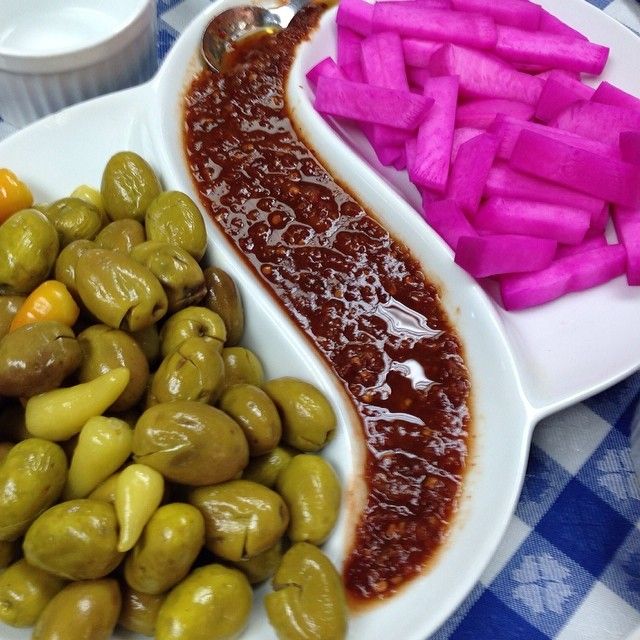How to Pickle Turnips (and just about any other Vegetable)

You can pickle just about anything. And whatever you pickle turns out fresher and better than any store-bought pickle or veggie. Pickling at home is also economical. And fun!
As I said, you can pickle just about anything: cucumbers, peppers, tomatoes, green beans, and so much more. But for the purpose of this recipe – and because my Middle Eastern cookbook is coming out in just a couple of weeks – I am going to show you how to pickle turnips.
Pickles and the Middle East
Pickles are easy to make, and they are always present on the Middle Eastern table. I have never been a big fan of turnips, but these pickled turnips rock. They make a striking impression, too. Their hot pink color is not due to chemicals, rather it is due to the beets that are pickled right along with them.

It seemed that some kind of pickle accompanied every meal I had in the Holy Land, and I thoroughly enjoyed them all. Whether in a pita sandwich or by themselves, the pickles I had were simple, crunchy, and tangy. Oh. So. Good!
I have a hard time keeping pickles in the house, because my kids love them so much. Making them is much cheaper than buying them (just want to point that out, in case you have kids like mine). 😉
Turnips aren’t the only veggie you can pickle. Other tart and crunchy options include: tomatoes, okra, onions, garlic, cucumbers, asparagus, green beans, beets, cabbage, carrots, cauliflower, peppers of all kinds and colors, and more!
You will need 6 pint jars (or the equivalent) for this recipe. I also prefer to use kosher salt over pickling salt. I find that pickling salt is too salty. If you do use pickling salt, then you might want to reduce the amount that you use.
How to Pickle Turnips (and Other Veggies)
INGREDIENTS
- 3 cups of water
- 1 cup white distilled vinegar
- 2 pounds of turnips, peeled and sliced into ½-inch thick wedges or into sticks
- 6 slices of a peeled beet
- 3 cloves of garlic, peeled and thinly sliced
- ⅓ cup of coarse ground kosher salt
- 1 bay leaf
INSTRUCTIONS
- In a saucepan over medium-high heat, add 2 cups of water, the salt and the bay leaf, stirring until the salt is dissolved.
- Remove the saucepan from heat and allow to cool until it reaches room temperature. Once cool, add the vinegar and the remaining 1 cup of water.
- Cut the turnips into ½-inch wedges or into sticks. If you cut them into sticks, make them about the size of French fries. Place 1 slice of beet into each jar (this is what will give the turnips their pink color), then divide the turnips and garlic slices among the jars. Pour the salted brine over the turnips, making sure they are completely covered, top off with water if necessary.
- Place the lids on the jars and let them sit at room temperature (in a cool place) for at least one week. Once done, they can be refrigerated until ready to serve. Pickles will keep for months when refrigerated.
Pickles are Healthy too!
Time Magazine ran a story just last week on the health benefits of pickles. It was titled The Salty Food that Shockingly Healthy. It’s a good read and I recommend that you take a moment to read it in full. But here’s a little quote from it to whet your appetite:
Cultures around the world have enjoyed fermented foods for millennia; they devour kimchi in Korea, sauerkraut in Germany and cheese—everywhere. Now fermenting is appealing to consumers eager to return to naturally healthy ways of eating. Top chefs are embracing it too; Momofuku’s David Chang has a culinary lab dedicated to food science, including fermentation, which he calls the “machinery of flavor.” Fermentation is what happens “when rotten goes right,” Chang says. It may sound kind of gross, but fermentation involves “good” micro-organisms breaking down or partially digesting food, which makes nutrients easier for your body to absorb. Research suggests that fermented foods can also strengthen immunity.
Bon Appetit!
Like pickles? Have a favorite veggie that you like to eat as a pickle? Tell me about it in the comments below!